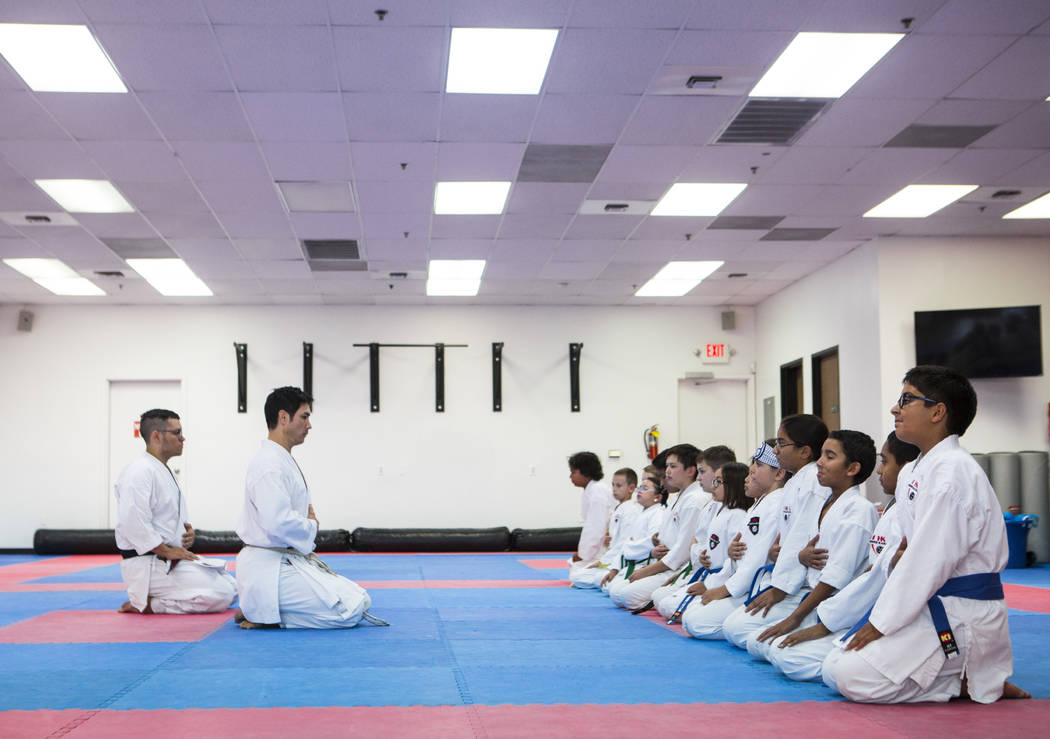UNLV professor’s therapy program aimed at building athletic prowess
An athlete looking to get faster or stronger might spend time in the gym or working on their skills with a coach.
But under a program developed by a UNLV professor, they might also work their mental muscles by practicing positive affirmations with a therapist.
The Optimum Performance Program in Sports, or TOPPS, the brainchild of psychology professor Brad Donohue, asks athletes to attend counseling sessions with a goal in mind, rather than dealing with an issue like depression or alcohol abuse. Therapy then focuses on strategies an athlete can use to overcome obstacles, whether that’s anxiety before a game, anger after a loss or something else, Donohue said.
Donohue says that framing counseling as a way to improve athletic performance can make therapy more accessible to student athletes who otherwise shy away from it.
“When we sit down, we talk about how they might want to be known at the end of their career,” Donohue said. “We talk about our performance triangle: thoughts, behaviors and feelings with performance in the middle. We learn that some of those things are in your control, some are not.”
While the TOPPS program has concluded at UNLV after a grant that funded it expired, Donohue has turned to community organizations that teach and train young athletes to carry on its principles.
Depression among student athletes
Mental health care for college athletes has become a point of discussion in the NCAA in recent years, with one study finding that nearly one-quarter of student athletes surveyed reported symptoms of depression. Other studies have specifically linked sports-related injuries and instances of “choking” during pressure-filled contests to increased rates of depression.
Donohue said a combination of factors leads to anxiety and depression in student athletes, including age, as young adults frequently report higher rates of mental illness than other groups. Pressure to perform both academically and athletically, and an exposure to sometimes faceless criticism via social media are other factors, he said.
But traditional counseling often carries a stigma among young people coming from a sports culture that emphasizes toughness, Donohue said, which means not enough athletes seek it out. A 2016 study found a wide variability of mental health resources on NCAA Division I campuses, but few counselors in athletic training rooms.
“There is usually a delay between noticing something is wrong and seeking help,” Donohue said. “By the time they go, chances are counseling is less likely to help.”
Donohue said TOPPS practitioners tried to create a setting more like a sports facility than a clinic. For athletes looking to improve their speed, for example, Donohue said counselors encouraged them to come up with a positive saying to repeat to themselves while focusing on the task at hand.
Unlike traditional counseling, which is practiced one-on-one, TOPPS also involves members of an athlete’s support system like family or coaches, who attend some sessions to learn how best to support the individual seeking help. Donohue said his inspiration for TOPPS came partially from his experience with his father, who he described as overzealous about the outcomes of his son’s boxing matches.
“The rationale with traditional counseling is that athletes are emerging adults and would want to have their individuality and their space,” Donohue said. “In our case, 80 percent of athletes chose to have someone involved in their program, and the more relationships they had, the better they did.”
Athletes are particularly dialed in to what people think of them, Donohue said, which can exacerbate anxiety. But in a family context like TOPPS provides, the same trait often leads athletes to listen to ideas that can help them get better.
Shifting conversations
Donohue said that athletes typically begin the program focused on their sports performance, but over the course of four months of sessions the conversations often shift to other aspects of their lives. In this way, Donohue said he hopes to use sports as a segue to broader personal improvement.
Karate instructor Hiroshi Allen, who worked with Donohue during the TOPPS program, said he has already applied some of the same ideas at his karate studio.
Allen said that on the professional level, TOPPS gives athletes tools to overcome in-game setbacks that might otherwise have an impact on their confidence.
“You may be taking three or four minutes to overcome something like a touchdown scored at the beginning of a game, but that’s an eternity in sports,” Allen said. “With TOPPS, they realize they have a tool they can use instead of feeling hopeless.”
Allen added that the same principles can be applied to situations outside of sports, such as staying focused before a big test like the GRE, or before a future job interview.
With his youngest students, Allen said he uses TOPPS techniques to reduce anxiety or build excitement before a class. He says he’s found that students who learn some kind of mental health skills are then better prepared to learn the athletic skills later.
“They’re the easiest to teach this to,” Allen said. “It becomes part of the training, and they don’t think twice about it.”
Contact Aleksandra Appleton at aappleton@reviewjournal.com or 702-383-0218. Follow @aleksappleton on Twitter.


















